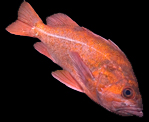
Club-tipped anemone, Corynactus californica
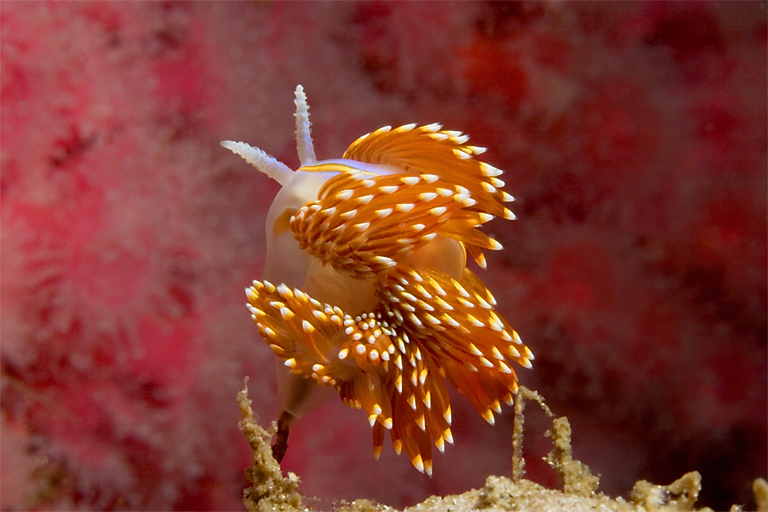
The cerata of this egg laying Hermissenda crassicornis are disheveled by
the water's surge, while its two annulate rinophores protrude upward. Visible in
the background is a colony of Corynactis californica that lines a cavity
in the tracks of a sunken World War II era amphibious landing tank. These
vehicles are commonly called "amtraks", a condensation of "amphibious tracked".
Hermissenda is one of many creatures in Monterey that, from time to time,
appear in large numbers. This specimen was one of perhaps several hundred that
had aggregated on one side of an amtrak.
"Mating Amtraks", Monterey Bay, California
July 9, 2005
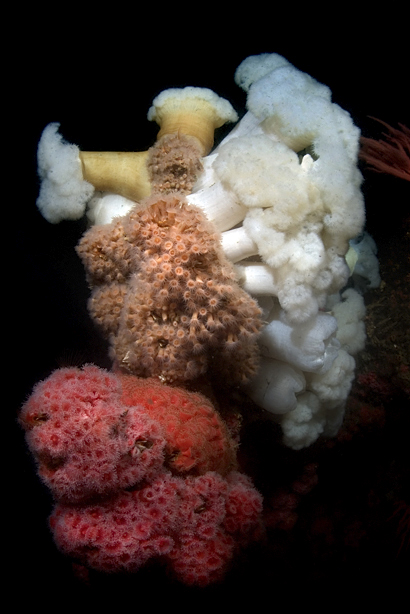
A column of anemones. From top to bottom: giant plumed anemones (Metridium
farcimen), yellow zoanthids (Epizoanthus scotinus), and club-tipped
anemones (Corynactus californica). This is an example of how strobe
lighting can be used to manipulate how the human eye and brain perceive a scene.
In this case the strobes were set to make the Metridiums appear higher
off the bottom than the Corynactus. This isn't actually the case. The
subject's true orientation actually makes it look rather unphotogenic. I was a
little slow to realize how pretty this column is, and, oddly enough, this shot
was taken more out of frustration than anything else. The sole purpose for this
dive was to take pictures of a subject about three feet away. These pictures
didn't turn out nearly as well as I had hoped and I switched to taking shots of
this anemone column to console myself.
"Deep Shale", Monterey Bay, California
April 16, 2005
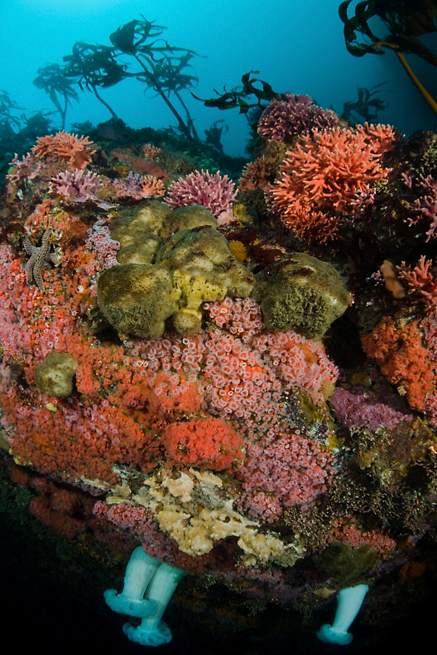
Up or down? Having been quite disappointed by Canon's 15mm fisheye lens, I
picked up Sigma's version. So far, it looks like the new toy adapts to
underwater life much better than does the Canon. I suspect there will be a used
Canon fisheye going up for sale on eBay soon. This shot contains nothing more
than the usual Carmel Bay subjects: California hydrocoral (Stylaster
californicus), Corynactis californica, and Metridium farcimen.
However, I like it because of the lighting -- actually, the lack of lighting in
the bottom of the shot and that the Metridiums don't seem to need any
illumination to show up just as saliently as they always do. It almost seems
like the bottom of the shot is some sinister complement to the heavenly blue
water at the top. I suspect this picture wouldn't have been nearly as successful
if taken on a day when Carmel Bay's water was its more usual green.
"Outer Pinnacles", Carmel Bay, California
January 28, 2007
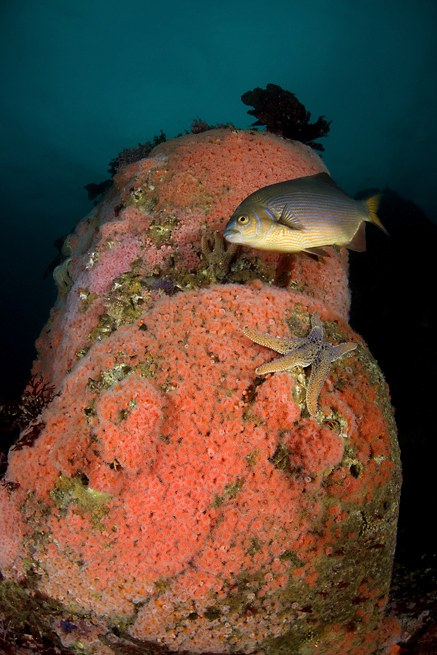
The top of Eric's pinnacle is covered in Corynactus californica. This
area is in somewhat pristine shape despite the hoards of divers that come here.
I suspect that a misplaced fin here or there isn't much compared to the fury
winter storms inflict upon things in such shallow depths. Striped perch
(Embiotoca lateralis) such as this one can be found almost anywhere a
Monterey diver may venture.
"Eric's Pinnacle", Monterey Bay, California
February 10, 2007
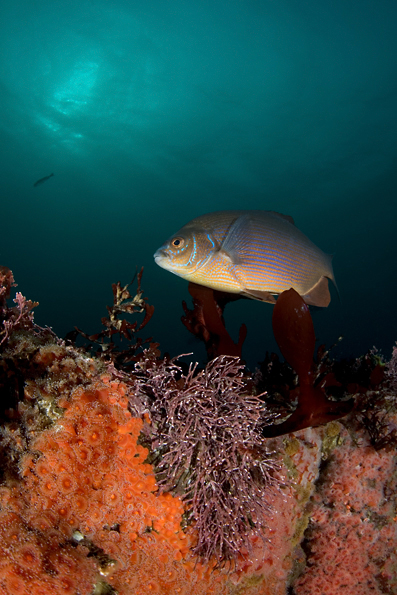
Striped perch (Embiotoca lateralis) and club-tipped anemones
(Corynactus californica).
"Eric's Pinnacle", Monterey Bay, California
February 10, 2007
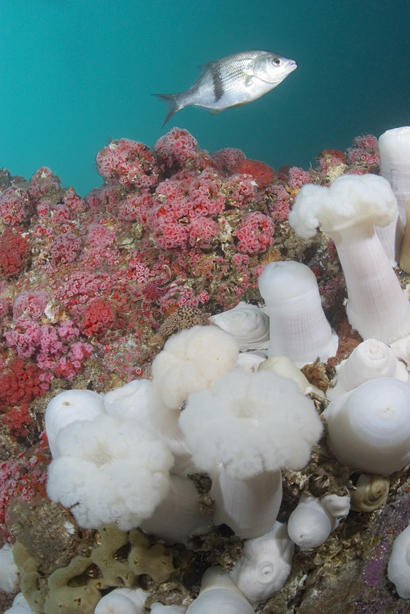
Pile perch (Damalichthys vacca), club tipped anemones (Corynactis
californica) and giant plumed anemones (Metridium farcimen). Days in
which the water is clear enought to take pictures with minimal backscatter and
this large a depth of field are not common inside Monterey Bay.
"Ballbuster", Monterey Bay, California
December 17, 2005
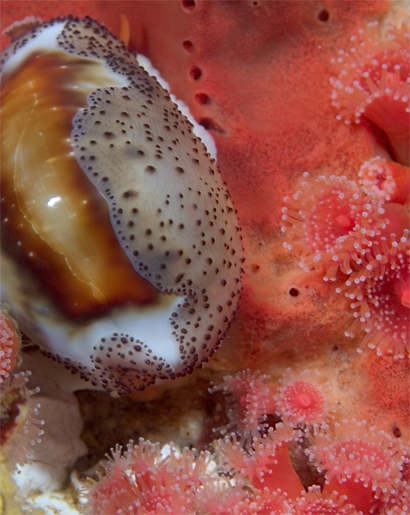
Most people's experience with cowries is limited to seeing napkin holders
fashioned from the tiger cowries found in the south pacific. Thankfully for
them, chestnut cowries (Cypraea spadicea) are a little small for use in a
table setting. While I find their exposed mantle and polished shell interesting,
I seldom shoot pictures of them since they seem to have an affinity for boring
backgrounds. This one was kind enough to pose with some Corynactis
californica and a bright red sponge.
"Granite Point Wall", Carmel Bay, California
April 2, 2006
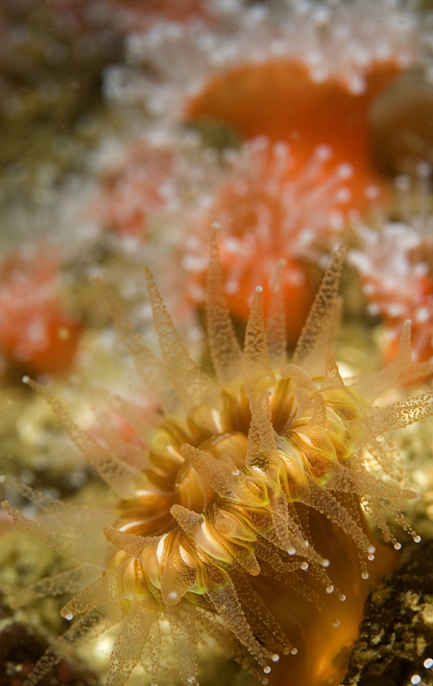
Brown cup coral (Paracyathus stearnsi) with club tipped anemones
(Corynactis californica).
"Shale Island", Monterey Bay, California
July 15, 2006
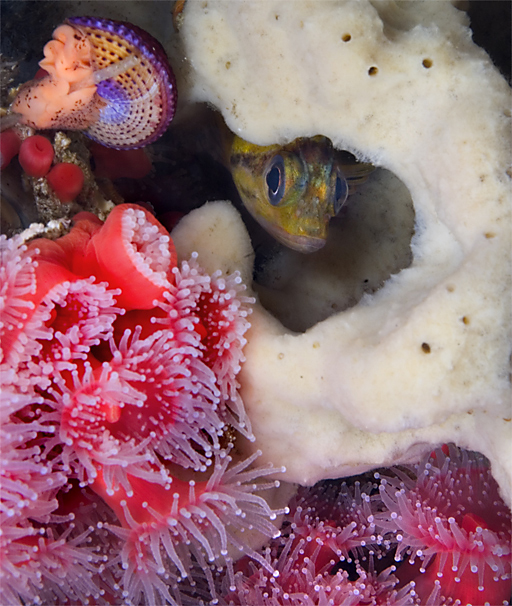
A young China rockfish (Sebastes nebulosus) hides in sponge surrounded by
club-tipped anemones (Corynactus californica) and a jewel top snail
(Calliostoma annulatum).
"Forgotten Pinnacle", Carmel Bay, California
December 4, 2004
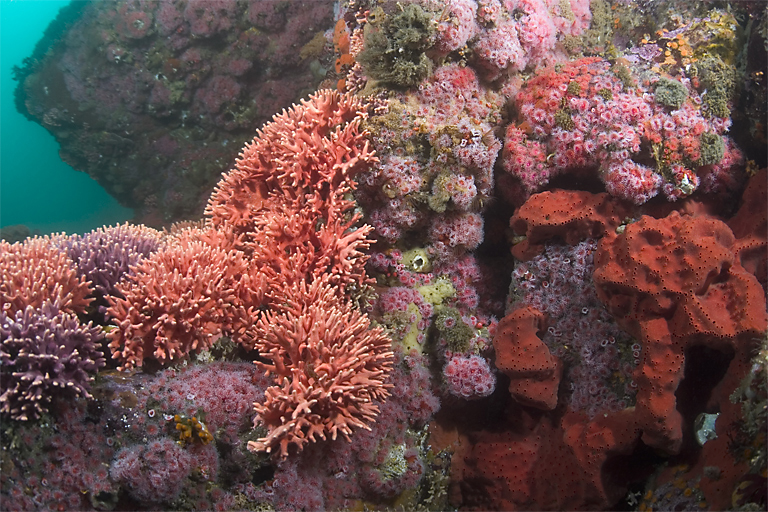
This pocket of California hydrocoral (Stylaster californicus) extends
well beyond the edges of this photograph. It's easy to spend an hour or more
here, floating motionless as the surge sweeps you back and forth across the
pocket's features.
"East Pinnacles", Carmel Bay, California
February 12, 2005
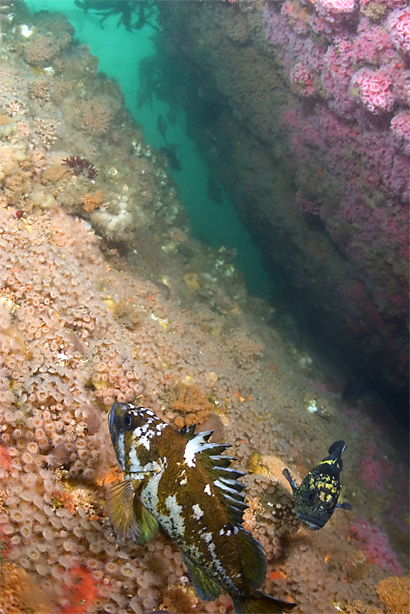
Gohper (Sebastes carnatus) and China (Sebastes nebulosus) rockfish
resting in a colorful crevice.
"Little Sur Pinnacle", Big Sur, California
June 25, 2005














